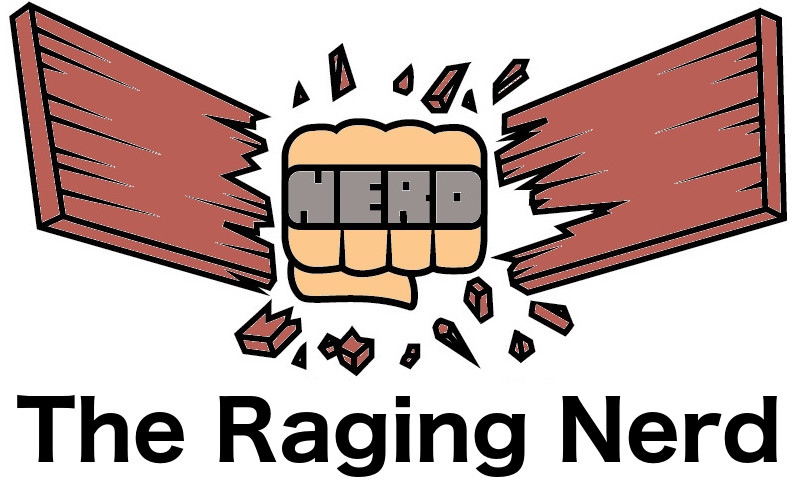How to Rock Humor Graphic Tees at Your Next Nerdy Game Night or Pub Crawl
Gearing up for a casual night out with friends, a lively game night, or a fun pub crawl means picking the right outfit to feel comfortable and confident. For nerds who enjoy humor and love their drinks, humor graphic tees are the perfect way to express personality while keeping things light and fun. Drinking t shirts with clever, adult humor designs have become a staple for anyone wanting to combine geek culture with a sense of humor that’s just a little bit edgy.
One of the best things about these humor graphic tees is how they effortlessly blend wit with style. Designs featuring witty puns, clever nods to science or gaming, or humorous takes on drinking culture invite laughs and spark conversations. Wearing one to a game night not only shows off your nerdy interests but also your great sense of humor. You might sport a shirt that jokingly references your favorite RPG with a twist involving your go-to beverage. It’s the perfect icebreaker and a subtle way to share your personality with like-minded friends.
Planning a pub crawl or a casual hangout at a local bar? These adult humor t shirts bring a relaxed vibe focused on fun and connection. Unlike formal attire or flashy clothes, humor graphic tees keep things approachable. They show you don’t take yourself too seriously but still enjoy cleverness and creativity. Many drinking-themed tees cleverly incorporate geek culture—think chemistry jokes about alcohol molecules or humorous nods to famous video game characters enjoying a brew. This makes them especially popular among nerds who want their clothing to reflect their passions and personality.
With Father’s Day coming up, these tees make an excellent gift choice for dads who appreciate humor, nerdy references, and a good drink. Instead of the usual ties or socks, a funny drinking t shirt with adult humor can be a fresh, fun surprise that Dad will actually want to wear. For the science buff who loves clever puns, the gamer who enjoys social nights, or simply the dad with a great sense of humor, there’s a graphic tee that fits his style perfectly. It’s a gift that says you get him—and that’s what makes it memorable.
Styling these tees is all about versatility. Humor graphic tees pair well with jeans and sneakers, casual skirts, or shorts. For game nights at home or chill gatherings, comfort is king. Pair your favorite drinking t shirt with comfy joggers or leggings to keep the mood easygoing. Heading out for a pub crawl? Layer your tee under a denim jacket or flannel shirt for a bit of edge and extra warmth as the night goes on. Don’t forget to accessorize with fun nerdy pins or patches to really amp up the geek factor.
Picking the right humor graphic tee can set the tone for any event. A shirt featuring a witty alcohol-related pun from your favorite TV show or comic can be just the thing for a relaxed night in with fellow nerds. It shows you’re part of the in-crowd who gets the joke. For livelier pub events, something bold and visually striking can make you stand out while still keeping that adult humor intact. The key is finding a shirt that feels authentic to you and fits the vibe of the occasion.
Shopping for drinking t shirts has never been easier thanks to online stores specializing in humor graphic tees catering to niche audiences like nerds and adults with playful humor. Many tees use high-quality fabrics ensuring they’re not only funny but comfortable and durable enough for repeated wear. Designs often feature clever typography, eye-catching graphics, and witty slogans that make them conversation starters wherever you go. Plus, supporting small or independent brands specializing in adult humor tees means getting unique designs you won’t find in mainstream stores.
 Wearing these shirts taps into a larger trend of using humor to bond and break the ice. Nerd culture has long been about community, shared interests, and clever references, and drinking-themed humor tees fit perfectly into that ethos. From jokes about science experiments gone wrong to poking fun at fantasy quests or celebrating social drinking mishaps, these shirts speak your language. They’re a playful nod to your identity and a fun way to connect with others who appreciate a good laugh.
Wearing these shirts taps into a larger trend of using humor to bond and break the ice. Nerd culture has long been about community, shared interests, and clever references, and drinking-themed humor tees fit perfectly into that ethos. From jokes about science experiments gone wrong to poking fun at fantasy quests or celebrating social drinking mishaps, these shirts speak your language. They’re a playful nod to your identity and a fun way to connect with others who appreciate a good laugh.
Ultimately, humor graphic tees are about making you smile and spreading that joy to others. Donning one for a casual night out, game night, pub crawl, or gifting one as a thoughtful Father’s Day surprise means wearing more than just a shirt—you’re sharing your personality and sense of humor. Next time you plan a night with friends or want to surprise Dad with something unique and funny, consider a drinking-themed humor tee that celebrates nerdy interests with a side of adult humor. It’s an easy way to look great, feel comfortable, and enjoy the company of people who get your vibe.
Father Figures on Film: The Best Movie T-Shirts for Nerdy Dads This Father’s Day
Some dads golf. Some dads grill. But the best dads? They quote iconic movie lines, rewatch trilogies religiously, and proudly geek out over their favorite film franchises. This Father’s Day, skip the generic gifts and celebrate your dad’s legendary taste in pop culture with a gift that speaks to his nerdy soul — movie T-shirts that honor his cinematic obsessions.
Whether he’s a sci-fi purist, a superhero buff, or a comedy cult classic collector, there’s a shirt out there that perfectly sums up his fan status. Let’s take a closer look at some of the most epic, hilarious, and nostalgic movie T-shirts that make ideal Father’s Day gifts for film-loving dads.
If your dad still debates who shot first or knows the difference between parsecs and lightyears, he’s likely a die-hard space saga fan. A graphic tee featuring a parody of iconic starship captains, galactic overlords, or rogue smugglers is more than fashion — it’s a tribute to decades of cinematic devotion. Look for vintage-style prints that harken back to the original trilogy days, or minimalist designs that let him rep the rebellion (or the empire) in style. Bonus: these shirts pair well with popcorn and weekend marathons.
He might not wear a cape, but he’s the hero of your household — which makes him the perfect candidate for a movie T-shirt showcasing his favorite comic book legend. Whether he sides with brooding vigilantes or witty web-slingers, you’ll find designs that reflect his comic book loyalties. Consider tees that spoof classic logos or merge pop culture references with dad humor — like superhero symbols mashed with grilling gear or dad jokes hidden in plain sight. Because let’s face it: with great dad jokes comes great responsibility.
Your dad doesn’t just watch action movies — he lives by them. He quotes every line from 80s explosions-and-muscle-fueled blockbusters and still dreams of slow-motion walkaways. Give him a shirt that honors his favorite one-liners, unforgettable villains, or big-budget stunts. Whether it’s a nod to barefoot heroes in high-rise buildings or a love letter to underground resistance fighters, these tees let him flex his action star alter ego without leaving the couch.
Some dads have a dry wit. Others have entire comedy scenes memorized down to the inflection. For the dad who loves absurd comedies, office satire, or indie gems that never got the credit they deserved, go for movie T-shirts that reference his favorite laugh-out-loud moments. Think fake companies from fictional worlds, retro logos from ’90s cult hits, or mashups that only real fans would recognize. He’ll love explaining the shirt to people who “don’t get it” — trust us.
If your dad has ever corrected someone’s pronunciation of “Smaug” or compared modern politics to Middle Earth, you know he’s a fantasy fan. From elves and orcs to dragons and dark lords, there’s no shortage of epic movie T-shirts inspired by fantasy films. Opt for designs that subtly incorporate maps, magical runes, or insider phrases only true fellowship members would understand. Pair the shirt with a tankard of root beer, and you’ve got the perfect Father’s Day vibe.
 Let’s be real — ties are boring, and socks just don’t scream personality. But Father’s Day t-shirts inspired by your dad’s favorite movies? That’s a gift he’ll actually wear — and wear proudly. Every time he puts one on, he’s not just getting dressed; he’s channeling a character, a moment, or a memory from a film he loves.
Let’s be real — ties are boring, and socks just don’t scream personality. But Father’s Day t-shirts inspired by your dad’s favorite movies? That’s a gift he’ll actually wear — and wear proudly. Every time he puts one on, he’s not just getting dressed; he’s channeling a character, a moment, or a memory from a film he loves.
Whether your dad’s the stoic warrior type or the lovable goofball, there’s a shirt in the Five Dollar Tee Shirts collection that captures his essence. This year, let the remote rest in his hands, the snacks be plentiful, and his wardrobe get a much-needed upgrade with some of the coolest movie T-shirts for Father’s Day.
Ready to gear up for Dad? Explore the full Father’s Day collection now and find a tee that turns your dad into the hero of his own movie.
From Blue Steel to Big Screen Style: Zoolander’s Reign as a Film Fashion Icon
Let’s face it—most fashion icons wouldn’t be caught dead doing “Blue Steel” in front of a mirror. But for those of us who grew up quoting absurd lines like “What is this? A center for ants?!” and perfecting our smoldering stare in secret, Zoolander is more than a comedy—it’s a cult masterpiece. It may parody the high-stakes world of runway fashion, but in doing so, it somehow became a style statement of its own. And believe it or not, Zoolander is a fashion icon for nerds everywhere—especially the ones who proudly rock their fandom on graphic tees.
For decades, fashion and nerd culture seemed like polar opposites. While the runway was full of avant-garde looks and supermodels, nerds were depicted with pocket protectors and social anxiety. But somewhere along the way—probably around the time comic book movies took over the box office—the nerd aesthetic started to evolve. Suddenly, it was cool to wear your fandom on your sleeve (literally), and characters like Derek Zoolander started showing up not just as memes, but as muses.
What makes Zoolander such a perfect fashion icon for nerds? He’s completely over-the-top, lives in his own eccentric world, and yet somehow manages to be oddly relatable. Beneath all the absurdity, Derek Zoolander is a guy just trying to be good at something he thinks matters—and that’s pretty nerdy when you think about it.
Zoolander isn’t just funny; it’s satire with laser focus. It pokes fun at fashion industry excess, celebrity egos, and the idea that being really, really, ridiculously good-looking is enough to change the world. For movie nerds who love smart writing hidden behind slapstick, Zoolander is a goldmine of quotable lines and unexpected depth.
This makes it ripe for interpretation through clothing, particularly in the form of movie t shirts. A Zoolander tee isn’t just a reference—it’s a badge that says, “I get the joke.” It’s clever, it’s niche, and it always sparks conversation with fellow fans. Whether it’s Mugatu’s wild outfits or Hansel’s weird zen vibes, the film offers a buffet of characters and moments that translate perfectly into wearable comedy.
The real brilliance of Zoolander is in the visuals. The wild costumes, the exaggerated runway walks, and the perfectly terrible male model expressions all lend themselves to iconic, wearable moments. And while you might not rock a fur vest and bell-bottoms like Hansel, you can definitely wear a tee that captures his essence. Movie nerds love deep cuts and obscure references—and Zoolander delivers on both.
Wearing a Zoolander movie shirt is like throwing up a nerd signal. You don’t have to explain the joke—those who get it, get it. And those who don’t? Well, you just hit them with a “Blue Steel” and walk away.
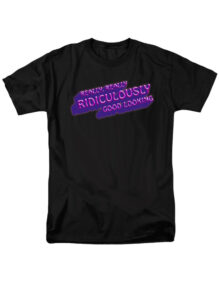 At its core, Zoolander’s journey is about self-discovery, purpose, and realizing there’s more to life than being really, really, ridiculously good-looking. That’s a message nerds can get behind. The movie takes a shallow world and finds something heartfelt in it, which makes it both hilarious and endearing.
At its core, Zoolander’s journey is about self-discovery, purpose, and realizing there’s more to life than being really, really, ridiculously good-looking. That’s a message nerds can get behind. The movie takes a shallow world and finds something heartfelt in it, which makes it both hilarious and endearing.
So yes, Zoolander may not be your typical fashion icon. He’s ridiculous. He’s clueless. But he’s also earnest and passionate in a way that speaks to those of us who obsess over the things we love—whether it’s a tabletop game, a sci-fi saga, or a comedy movie with a walk-off battle.
Zoolander might not be on the cover of Vogue, but for nerds who understand the power of a perfect reference and a well-timed quote, he’s high fashion. The next time you slip into a shirt featuring his iconic pout or one of Mugatu’s outlandish designs, know that you’re not just wearing a shirt—you’re making a statement. You’re wearing satire, fandom, and fashion all at once.
And in the glorious world of movie t shirts, that’s about as good-looking as it gets.
From Doodles to Digital: The Evolution of Artistic Graphic T-Shirts for Artsy Type
Nerd fashion has come a long way from the days of basic logos and slogans. Where once it was enough to wear a t-shirt featuring your favorite fandom’s emblem, today’s nerd style has taken a more sophisticated turn. The rise of artistic graphic t-shirts has transformed the way fans express their passions—moving from straightforward branding to wearable works of art.
In the early days, nerd-centric tees were all about simplicity. A Starfleet insignia, a retro video game character, or a sarcastic quote in a bold font—these designs were more about signaling your tribe than making an artistic statement. While effective for quick recognition, they left little room for personal style or aesthetic depth.
That started to change in the mid-2000s, when independent artists began leveraging new tools and online platforms. Drawing tablets, vector software, and affordable digital printing opened the floodgates for creative expression. Suddenly, artists could remix and reimagine geek culture through their own lenses. A Pokémon evolution chart could be illustrated like a scientific diagram. A fantasy map could be turned into an inked, parchment-style masterpiece. These weren’t just fan shirts anymore—they were concept pieces with their own artistic integrity.
What emerged was a new era of fashion: artistic graphic t-shirts that blurred the line between fandom and fine art. These tees didn’t just reference a show, game, or theme—they interpreted it. Rather than loud, literal imagery, many designs leaned into subtle symbolism, intricate linework, or layered references. For the nerd who wanted more than merch, this was a revelation. A shirt could now be a conversation starter, a display of taste, and a low-key nod to a deeply loved universe—all at once.
 Today, Art Graphic Tees are more versatile and expressive than ever. Designs range from surreal space-scapes and glitchcore robots to anime reimagined in the style of classical portraiture. Some shirts take inspiration from science itself, integrating mathematical patterns, sacred geometry, or neural network imagery to highlight the beauty of logic and theory. Others borrow from gothic or cyberpunk art styles to evoke mood and atmosphere. The result? Clothing that feels smart, meaningful, and visually stunning.
Today, Art Graphic Tees are more versatile and expressive than ever. Designs range from surreal space-scapes and glitchcore robots to anime reimagined in the style of classical portraiture. Some shirts take inspiration from science itself, integrating mathematical patterns, sacred geometry, or neural network imagery to highlight the beauty of logic and theory. Others borrow from gothic or cyberpunk art styles to evoke mood and atmosphere. The result? Clothing that feels smart, meaningful, and visually stunning.
This evolution also reflects something bigger about nerd culture. No longer on the fringes, the modern nerd embraces complexity, aesthetics, and originality. Wearing a well-designed tee isn’t just about liking a subject—it’s about how you connect with it and how you choose to display that connection to the world. Artistic graphic tees are the medium, and the message is entirely personal.
With so many artists exploring the intersection of fandom and fine art, there’s never been a better time to refresh your wardrobe. Whether you’re into fantasy worlds, sci-fi schematics, cosmic horror, or the poetry of space, there’s a shirt out there that turns your obsession into a masterpiece.
Looking for the perfect tee that blends intelligence, creativity, and style? Check out our curated collection of artistic graphic t-shirts and let your wardrobe speak your nerdy language with flair.
Why Every Nerd Needs a Futurama T-Shirt in Their Closet
There’s something timeless about a great animated series, and when it comes to nerd culture, few shows are as enduring, hilarious, or cleverly written as Futurama. Whether you first discovered it on late-night cable, binged it on streaming, or caught episodes during your teenage years, the series has likely left a lasting impression. With a perfect blend of science fiction, satire, and slapstick, Futurama manages to balance intelligent comedy with emotional storytelling—something that keeps fans coming back even years after its original run. And if you’re a true fan, there’s one thing you definitely need: a Futurama T-shirt.
Wearing fandom merch isn’t just about fashion—it’s a form of communication. It’s a way to show the world where your loyalties lie, to spark conversations, and to find your fellow nerds in the wild. Futurama, with its rich cast of characters and iconic art style, lends itself perfectly to graphic tees that pop with personality. From the instantly recognizable Planet Express ship to Bender’s smirking metallic mug, these designs aren’t just stylish—they’re a badge of honor for people who appreciate smart, offbeat animation.
Part of what makes Futurama so beloved is its brilliant use of nerdy references. There are layers of math, physics, time travel theory, and sci-fi parody packed into nearly every episode. It’s a show that rewards you for paying attention, and that intelligence is reflected in the type of fan it attracts. If you know what the “Fry meme” is, have ever quoted “Shut up and take my money,” or can hum the Slurm jingle, then you’re one of the initiated. And what better way to wear that identity than through a shirt that captures it?
Beyond just the nostalgia, wearing Futurama merch is a nod to a certain era of animation. It’s a way of saying that you remember the golden age of adult cartoons, when creators like Matt Groening were redefining what a sci-fi comedy could be. Shows like Futurama didn’t just entertain—they raised the bar. With its complex plots and recurring themes of love, loss, and identity, the series often hit deeper emotional notes than fans expected. There’s a reason episodes like “Jurassic Bark” and “The Luck of the Fryrish” still get talked about decades later.
In an increasingly digital and impersonal world, wearing something that connects you to a community is powerful. That’s what makes Futurama T-Shirts more than just a pop culture nod—they’re wearable nostalgia. They remind you of the moments you laughed the hardest, the times the show surprised you with unexpected depth, and the characters who became strangely important over time. They offer a sense of belonging for people who value clever storytelling and ridiculous robots in equal measure.
Another benefit of rocking a shirt from the Futurama universe is its versatility. These tees can be styled casually for a laid-back weekend look or layered under a jacket for something a little more polished (but still delightfully nerdy). Heading to a convention? You’ll definitely get knowing nods from fellow fans. Running errands? You might just strike up a conversation with someone who shares your love of the show. From college campuses to coffee shops, from gaming nights to Comic-Con, these shirts travel well in nerdy circles.
 What’s more, Futurama is experiencing a bit of a resurgence. With new episodes in the works and a wave of nostalgic content hitting streaming platforms, fans both old and new are rediscovering its magic. That means your tee isn’t just retro—it’s relevant. It shows that you’re plugged into the current pulse of nerd culture while still paying homage to where it all began.
What’s more, Futurama is experiencing a bit of a resurgence. With new episodes in the works and a wave of nostalgic content hitting streaming platforms, fans both old and new are rediscovering its magic. That means your tee isn’t just retro—it’s relevant. It shows that you’re plugged into the current pulse of nerd culture while still paying homage to where it all began.
At the end of the day, a T-shirt might just be fabric and ink—but when it features a series like Futurama, it becomes something more. It’s a reminder of the jokes that made you laugh until you cried, the strange characters you grew to love, and the future that somehow felt like home. So if you’re looking to upgrade your nerd wardrobe, don’t overlook the brilliance and personality packed into one of these tees. After all, as Bender might say, you don’t need to be flashy—just immortal and shiny.
The Nerd’s Guide to Meme T-Shirts: Why Funny Tees Are the Ultimate Icebreaker
If you’ve ever found yourself struggling to start a conversation at a party, comic convention, or even during a casual campus meetup, you’re definitely not alone. For many nerds and geeks, small talk doesn’t always come naturally. But there’s a surprisingly simple solution that combines humor, personality, and fandom pride in one easy-to-wear package: the meme t-shirt.
These shirts aren’t just fashion—they’re personality on fabric. A clever graphic or well-placed joke can communicate who you are, what you love, and how sharp your wit is, all without saying a word. Whether your passion is quantum physics, classic RPGs, or cult TV shows, a well-chosen t-shirt can do the heavy lifting when it comes to breaking the ice and making instant connections.
Nerds, in particular, have always had a knack for humor. It’s smart, it’s layered, and often requires a certain level of pop culture knowledge or intelligence to truly appreciate. Funny t-shirts are the perfect outlet for this kind of humor, delivering instant laughs and knowing nods from those in the know. A shirt with a clever formula joke, a deep-cut sci-fi reference, or a sarcastic RPG pun doesn’t just get attention—it starts conversations.
And the best part is, the selection of nerdy, funny t-shirts out there is massive. Whether you’re into Math and Science T-Shirts that make jokes about black holes and mitochondria, or Movie T-Shirts that remix your favorite on-screen moments into absurd humor, there’s something for every fandom. Television T-Shirts quote your favorite shows, while Ninja T-Shirts and Pirate T-Shirts let you pick a side in the most playful of rivalries. If you’re a fantasy fan, you can gear up with Fantasy Art T-Shirts that feature dragons, wizards, or sarcastic elves.
For those with strong opinions and even sharper punchlines, Political T-Shirts blend satire and geek culture in bold ways. Music lovers aren’t left out either, thanks to Music T-Shirts that mash up band culture with gaming, science, or anime aesthetics. Role Playing Game T-Shirts proudly display class stats, dice rolls, and campaign references, while Video Game T-Shirts let you represent your favorite console legends or pixelated icons. And for the romantically inclined, Valentine’s Day designs bring the geek love with cheesy, charming memes that strike the perfect balance between nerdy and sweet.
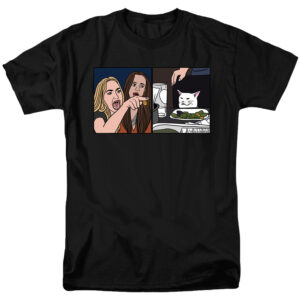 A meme t-shirt can also act as a kind of social shortcut. Someone who recognizes your “Schrödinger’s Cat: Dead Serious Since 1935” shirt is likely a fellow science enthusiast—or at the very least, someone with a good sense of humor. Spotting a tee with a D20 and the phrase “Roll for Initiative” can spark conversations about campaigns, characters, and epic quests. You don’t have to come up with a brilliant opening line—your shirt has already done it for you.
A meme t-shirt can also act as a kind of social shortcut. Someone who recognizes your “Schrödinger’s Cat: Dead Serious Since 1935” shirt is likely a fellow science enthusiast—or at the very least, someone with a good sense of humor. Spotting a tee with a D20 and the phrase “Roll for Initiative” can spark conversations about campaigns, characters, and epic quests. You don’t have to come up with a brilliant opening line—your shirt has already done it for you.
Ultimately, meme t-shirts give nerds the perfect way to wear their fandoms proudly while inviting others into their world. These tees are smart, funny, and instantly relatable to the right people, making them more than just fashion—they’re a connection tool. In a world full of strangers, one clever shirt can be the bridge to your next great friendship, gaming group, or nerdy inside joke.
So don’t be shy. Whether you’re decoding complex equations, marathoning old anime, or just looking for something hilarious to wear on a Tuesday, Meme T-Shirts offer the perfect blend of humor, fandom, and personality. Nerds don’t hide in the background anymore—and neither should your wardrobe.
Why Japanese Art and Film & TV T-Shirts Are the Ultimate Nerd Crossover
When it comes to expressive fashion, nerds have always led the charge—fusing pop culture, nostalgia, and sharp design into everyday wear. The Japanese collection at Threaded Labs is a perfect example of how this intersection works: blending iconic cultural references, minimalist design, and deep-cut fandom into wearable art. But what really makes this collection shine is how it pairs seamlessly with other Film & TV T-Shirts for nerds—giving fans a broad palette of influences to wear proudly.
The Japanese-themed shirts, like the Sorry Sumimasen T-Shirt, don’t just display language—they convey emotion and etiquette that resonate far beyond the text. For fans of anime or Japanese cinema, “Sumimasen” (すみません) is a familiar word, one that carries both politeness and emotion. That kind of subtle depth makes it more than just a shirt—it’s an artistic t shirt that tells a story.
Right alongside it, you’ve got the Ramen Japanese Noodle Soup T-Shirt, which adds a dose of light-hearted humor to the collection. With bold kanji and an illustrated bowl of ramen, it’s a favorite among fans who love humor graphic tees that are both stylish and clever. Whether you’re into food, manga, or Tokyo streetwear, this tee brings the fun—and easily ranks among the funniest graphic tees for pop culture lovers.
But Threaded Labs doesn’t stop at just Japanese motifs. Their broader selection of Film & TV-inspired tees bridges generations of fandoms. You’ll find a brilliant homage to The Little Tramp, a black-and-white cinematic icon known for silent-era humor and heart. The design captures the timeless silhouette and slapstick soul of Charlie Chaplin, turning this legendary character into a modern art graphic tee. It’s nostalgia wrapped in wearable design—perfect for those who love classic film history as much as contemporary art.
Another standout is the Three Stooges T-Shirt, a tribute to the kings of comedic chaos. This one’s perfect for anyone who appreciates vintage television and the golden age of physical comedy. Featuring the beloved trio in bold, expressive illustrations, it lands squarely in the category of funniest graphic tees, but it still keeps its aesthetic edge sharp—balancing humor and visual appeal like few shirts can.
And let’s not forget The Phantom of the Night T-Shirt, a moody, atmospheric design inspired by gothic horror and vintage film noir. This shirt channels the drama of shadowy alleys, trench coats, and hidden identities. It’s for the nerd who enjoys a more mysterious aesthetic—equal parts fandom and fine art. It’s an excellent example of an artwork t shirt that belongs in both a film enthusiast’s wardrobe and an art gallery.
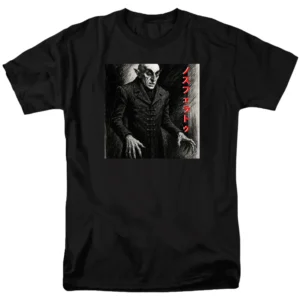 What unites all these shirts—whether they’re inspired by Japanese culture or iconic films—is their design sensibility. Threaded Labs doesn’t just slap logos on cotton; they create pieces that feel curated, refined, and thoughtful. These are artistic graphic t shirts meant to spark conversation, not just advertise a franchise.
What unites all these shirts—whether they’re inspired by Japanese culture or iconic films—is their design sensibility. Threaded Labs doesn’t just slap logos on cotton; they create pieces that feel curated, refined, and thoughtful. These are artistic graphic t shirts meant to spark conversation, not just advertise a franchise.
From the poetic simplicity of kanji characters to the grayscale genius of silent films, every shirt feels like a tribute to both form and fandom. If you’re someone who loves wearing your passions but also wants to stand out with creative, meaningful apparel, this collection delivers.
So whether you’re drawn to the cultural depth of Tokyo streetwear or the slapstick genius of the Stooges, Threaded Labs has something for you. Their lineup of artistic t shirts bridges cultures, eras, and genres—all through smart design and a clear love for nerdy storytelling.
Why Horror Movie T-Shirts Are the Ultimate Nerd Badge of Honor
Once upon a midnight dreary—okay, maybe it was just a rainy weekend—you curled up with a bowl of popcorn and hit play on a grainy VHS tape. Cue the eerie synth music, the slow camera pan down a dark hallway, and the unmistakable thrill of a low-budget horror masterpiece. Fast forward to today, and those same films you once watched from behind the couch now live proudly on your chest, immortalized in cotton and ink.
Welcome to the world of horror nerd fashion, where the gory, the creepy, and the absolutely ridiculous are worn with pride. Horror movie t-shirts aren’t just something you throw on for movie night—they’re a cultural phenomenon, a nostalgic nod, and sometimes, a hilarious inside joke.
In the early days, horror shirts were mostly relegated to merchandise booths at comic cons or horror fests, right between the replica machetes and the taxidermy bat keychains. But as horror fandom grew—and let’s be real, nerds took over the world—those shirts made their way into everyday life.
Today, it’s not uncommon to see someone sipping a latte in a tee that says, “We All Float Down Here,” or sporting a bloody handprint with the cheerful slogan “Camp Crystal Lake Counselor.” These aren’t just outfits—they’re declarations of loyalty to a genre that never dies (even when you think the killer is finally gone).
Let’s be honest: nerds are drawn to horror for the same reasons we love sci-fi and fantasy. World-building. Lore. Iconography. Character tropes. Recurring villains. And those weird little fan theories that connect everything from Halloween to Hellraiser.
We don’t just watch horror movies—we dissect them. We quote them. We rank the sequels (and yes, we’ll defend Part III of almost anything if given the chance). So wearing a shirt with Leatherface’s silhouette or a “Here’s Johnny!” print isn’t just about fashion. It’s about being part of a nerd tribe that studies horror like an academic subject—with bonus blood splatter.
There’s something visually compelling about horror-themed apparel. The artwork is bold. The fonts are stylized. The imagery ranges from shockingly grotesque to vintage comic-book kitsch. Whether it’s a clean minimalist design—like a lone red balloon—or a full-blown, blood-drenched collage of zombie faces, these shirts pack punch and personality.
They’re also versatile. You can wear them under a blazer for a cool “yes, I’m a horror nerd but I also pay my taxes” vibe. Or pair them with jeans and boots for full punk-rock, convention-floor swagger. Whatever your style, horror shirts adapt, survive, and evolve—just like a good movie monster.
Weirdly enough, nothing says “Come talk to me” like a shirt with a possessed doll on it. Fellow fans instantly recognize the reference. Non-fans might ask what the shirt means—and then suddenly, you’re explaining why The Thing is one of the greatest practical effects films of all time.
At conventions, horror shirts are a secret handshake. At work, they’re a chance to bond with the quiet IT guy who also has a stack of Fangoria magazines at home. And online? They’re social media gold. One great photo in a clever shirt and you’re suddenly the star of the horror subreddit.
 Wearing horror-themed apparel doesn’t mean you’re trying to scare anyone. It means you belong to something. It’s part nostalgia, part identity, and part “I dare you to ask me about my shirt.” Whether you’re into the moody elegance of The Exorcist, the satirical bloodbath of Scream, or the grindhouse madness of Evil Dead, there’s a tee for that—and it probably has a devoted fanbase.
Wearing horror-themed apparel doesn’t mean you’re trying to scare anyone. It means you belong to something. It’s part nostalgia, part identity, and part “I dare you to ask me about my shirt.” Whether you’re into the moody elegance of The Exorcist, the satirical bloodbath of Scream, or the grindhouse madness of Evil Dead, there’s a tee for that—and it probably has a devoted fanbase.
In the world of fandom, Horror Movie T-Shirts are more than merch. They’re wearable movie posters, nerd status symbols, and walking love letters to the genre that never stays dead.
So go ahead. Dig out that vintage tee with the melting face, or grab something new that celebrates your favorite creepy classic. And remember—every shirt has a story… just try not to wear it alone in the dark.
From Cult Classics to Concert Tees: Why Movie Nerds Also Love Music Shirts
There’s a beautiful overlap in the Venn diagram of nerd culture where film obsession meets musical devotion. If you’ve ever queued up Scott Pilgrim vs. The World for the fifth time or found yourself quoting This Is Spinal Tap while adjusting the EQ on your headphones, you already know: music is a huge part of what makes so many nerd-beloved movies iconic. And for fans who wear their fandom on their sleeves—literally—this fusion of passions leads to one inevitable conclusion: music shirts belong right next to your lightsaber and Criterion collection.
Let’s be real—nerds are connoisseurs. We don’t just like things. We research them. We catalog. We memorize. And we definitely collect. So when a movie hits all the right notes—solid story, aesthetic style, plus a killer soundtrack—it’s only natural to go hunting for merch that lets you rep the entire vibe. That’s where music shirts come in.
Take The Blues Brothers, for instance. A film about two orphaned musicians on a mission from God to save their childhood home by getting the band back together. The movie is a cult favorite for its humor, absurd car chases, and of course, its legendary soundtrack. Owning a Blues Brothers tee isn’t just about loving the film—it’s about celebrating rhythm and blues history, Aretha Franklin’s diner performance, and the sheer cool of that black-suit-and-sunglasses look. It’s a music shirt, a movie t shirt, and a whole mood rolled into one.
Or consider Spinal Tap, the ultimate mockumentary for rock fans. If you’ve ever said “These go to eleven” in earnest, congratulations—you’re probably overdue to add a Spinal Tap shirt to your rotation. It’s not just a fashion statement; it’s a nod to the absurdity and beauty of rock culture, filtered through a lens only nerds truly appreciate.
The same goes for Scott Pilgrim vs. The World, a film that blurred the line between comic book, indie music scene, and retro video game. Music isn’t a side dish in Scott’s universe—it’s the main course. The fictional band Sex Bob-Omb feels like a group you actually saw in a Toronto basement back in 2006. So yeah, wearing a Sex Bob-Omb music shirt is totally legit, and if anyone says otherwise, you can challenge them to a bass battle.
 But it’s not all fictional bands. Music shirts can also reflect the real-world influence behind these films. Guardians of the Galaxy brought a mixtape to a galactic gunfight and made retro pop cool again. Fans of the Awesome Mix don’t just hunt for cassette players at thrift stores—they want shirts that match the feel. Bowie, ELO, Redbone—suddenly your dad’s record collection is wardrobe inspiration.
But it’s not all fictional bands. Music shirts can also reflect the real-world influence behind these films. Guardians of the Galaxy brought a mixtape to a galactic gunfight and made retro pop cool again. Fans of the Awesome Mix don’t just hunt for cassette players at thrift stores—they want shirts that match the feel. Bowie, ELO, Redbone—suddenly your dad’s record collection is wardrobe inspiration.
Even a film like Baby Driver, which isn’t sci-fi or fantasy at all, managed to find its place in nerd canon thanks to its rhythmic editing, obsessive attention to detail, and thumping soundtrack. Music is practically a character in that movie, and if you walked out of the theater wanting to listen to The Jon Spencer Blues Explosion or Queen, you’re not alone.
What all these films have in common is this: they make music feel essential to the story. It’s not background noise—it’s emotion, memory, identity. And for nerds, that’s everything. We don’t just wear shirts—we wear statements. We signal who we are, what we care about, and which fictional bands deserve real-world reverence.
So yes, music shirts belong in every nerd’s wardrobe. Right next to the Star Wars tee with fraying sleeves and the Big Trouble in Little China shirt you keep saving for special occasions. Because music is just another branch of storytelling, and if you’re a movie nerd, odds are you’ve already memorized the soundtrack.
And if you haven’t yet? Let us help you fix that.
Saint Patrick’s Day in TV and Movies: A Pop Culture Celebration
Every March 17th, the world is awash in green, shamrocks, and Guinness as people celebrate Saint Patrick’s Day. While the holiday itself has roots in Irish history and the life of Saint Patrick, its modern pop culture presence is undeniable—especially in television and film. From sitcoms and animated classics to wild party movies, Saint Patrick’s Day has been used as a backdrop for hilarious (and sometimes chaotic) storytelling.
Sitcom Shenanigans: The Saint Patrick’s Day Episode
Sitcoms love a good holiday episode, and Saint Patrick’s Day is no exception. It provides the perfect setting for mischief, mistaken identities, and a whole lot of green beer.
How I Met Your Mother took the holiday to a new level with its episode No Tomorrow, in which Barney Stinson (Neil Patrick Harris) embraces the idea that anything goes on Saint Patrick’s Day. His reckless behavior leads to one of the show’s long-running mysteries: the identity of the Mother. The episode captures the party-hard mentality often associated with the day, but also sneaks in a lesson about responsibility.
The Office (U.S.) also delivered a memorable Saint Patrick’s Day episode, in which Michael Scott tries (and fails) to impress his new boss Jo Bennett. Meanwhile, Jim and Pam struggle with the realities of being new parents. The contrast between office antics and real-life responsibilities makes for a classic workplace comedy moment.
Animated Hijinks and Irish Stereotypes
Animated shows have had their fair share of Saint Patrick’s Day episodes, often playing with (or outright mocking) common Irish stereotypes.
In The Simpsons, the episode Homer vs. the Eighteenth Amendment is a wild ride inspired by Prohibition-era history, but it kicks off with Springfield’s rowdy Saint Patrick’s Day parade. Bart accidentally gets drunk, leading to a full-blown alcohol ban in the town. The episode uses the holiday as a catalyst for a larger story about rebellion and government overreach—classic Simpsons satire.
Meanwhile, Family Guy leans into absurdity with Peter’s Two Dads, which features Peter Griffin’s realization that his real father is Irish. The exaggerated Irish stereotypes in the episode—such as constant drinking and chaotic pub fights—are played for laughs, but also reflect how American media has often depicted Ireland in a humorous (if not entirely accurate) light.
Saint Patrick’s Day on the Big Screen
Movies have embraced Saint Patrick’s Day as a setting for wild parties, heartfelt reunions, and even crime capers.
One of the most famous Saint Patrick’s Day scenes comes from The Fugitive (1993), in which Dr. Richard Kimble (Harrison Ford) evades U.S. Marshals by blending into a massive Chicago parade. The scene wasn’t staged—the filmmakers actually shot during the real Saint Patrick’s Day parade, making for a thrilling and authentic escape sequence.
On the comedy side, The Boondock Saints (1999) is a cult favorite that leans into Irish Catholic themes, crime, and vigilante justice. While not strictly about Saint Patrick’s Day, the film’s strong Irish identity and pub-centered moments make it a go-to watch for the holiday.
For those who love full-blown party movies, Leprechaun (1993) is an over-the-top horror-comedy starring Warwick Davis as an evil leprechaun hunting down his stolen gold. It’s campy, ridiculous, and has become a bizarre yet beloved part of Saint Patrick’s Day movie marathons.
Dressing the Part: The Rise of Funny St Patrick’s Day Shirts
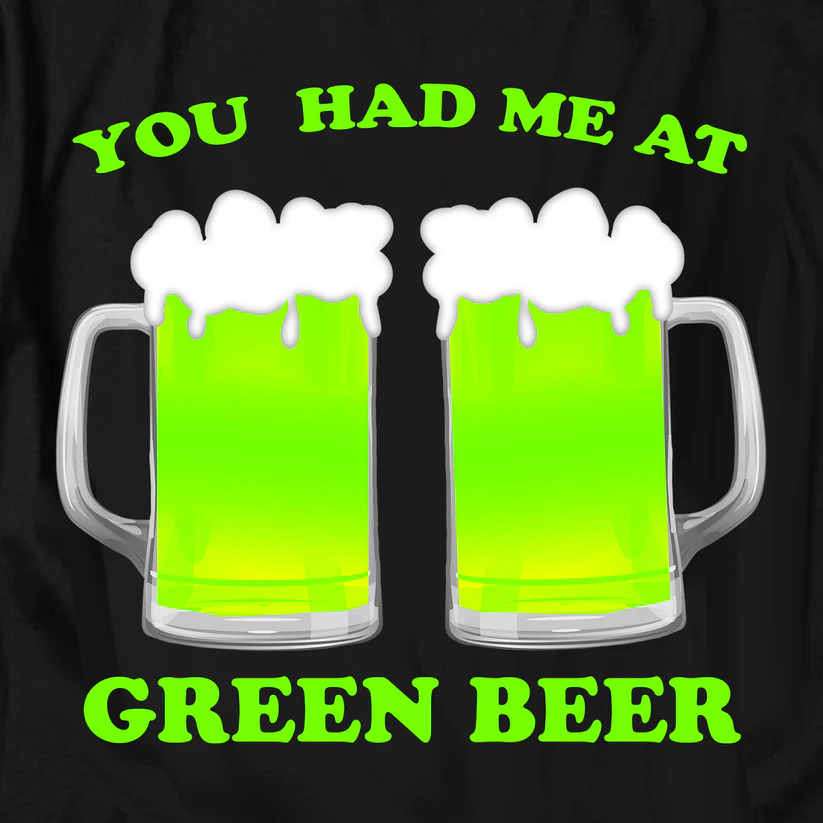 Of course, no Saint Patrick’s Day celebration is complete without festive attire. From leprechaun hats to green tutus, people love to dress up for the occasion. But one trend that has taken over in recent years is the rise of funny St Patrick’s Day shirts.
Of course, no Saint Patrick’s Day celebration is complete without festive attire. From leprechaun hats to green tutus, people love to dress up for the occasion. But one trend that has taken over in recent years is the rise of funny St Patrick’s Day shirts.
Pop culture references, sarcastic slogans, and pun-filled designs are everywhere. Some of the most popular include shirts with phrases like “Kiss Me, I’m Irish (Or Drunk, Or Both)” and “Let’s Get Shamrocked.” Others play on classic TV and movie moments—think It’s Always Sunny in Philadelphia-inspired designs featuring Paddy’s Pub or quotes from famous Irish-themed episodes.
A Holiday Worth Watching
Whether you’re binge-watching sitcoms, revisiting classic movies, or just enjoying a few pints while wearing a ridiculous t-shirt, Saint Patrick’s Day has become a pop culture staple. The holiday’s representation in TV and film reflects both its fun-loving nature and its sometimes over-the-top stereotypes.
So this March 17th, grab a Guinness, throw on your funniest Saint Patrick’s Day shirt, and enjoy the holiday—whether that means hitting the town, watching The Simpsons, or simply reveling in the luck of the Irish from your couch.
